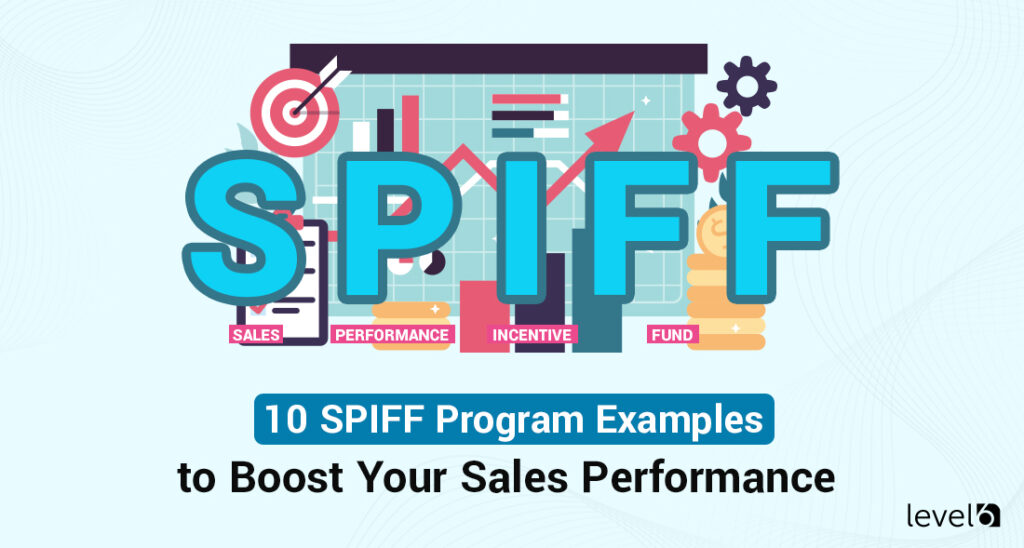Running a business can be a real challenge, regardless of what industry you’re in. Whether you’re a startup, an established small business, or a Fortune 500 company, keeping things on track is never easy. Between production, R&D, human resources, marketing, design, accounting, and all of your other departments, it’s a lot to manage (even if one person wears more than one of those hats, as is often the case with small businesses).
But there’s one important department which we just failed to mention, and which happens to be the lifeblood of every business, big or small. Without this department functioning at peak performance, nothing the rest of your team does will get you where you need to go. What department are talking about? You guessed it: sales.
Ensuring that your sales team is a lean, mean, selling machine deserves a huge chunk of your energy and attention. If you’re not hitting weekly, monthly, quarterly, and annual sales goals, then it doesn’t matter how efficient HR is, or what great new products or services the rest of your team has put together. Without cash flow from adequate sales numbers, everything else falls apart.
That’s why it’s so important to figure out how to get your sales team to perform at the level you need. As a recent HubSpot article points out, there are a couple of ways to increase sales. One is to actually improve the skills of your sales reps. This can take the form of in-house training, workshops, seminars, online courses, and so on. You can essentially look at how your team’s doing, where improvement is needed, and go from there. Maybe there are certain sales channels which everyone’s a little deficient on, or there might be technical deficiencies at play. Regardless of what the issue is or what needs fixing, it’s generally possible to diagnose this kind of technical performance with metrics, and through a thorough evaluation of your team’s day-to-day activity.
But, here’s the rub: improving your sales reps’ skill set will only get you so far. Why? Because even the most skilled sales person in the world needs something besides pure skill in order to exceed expectations. In addition to those skills, they need something far harder to analyze objectively, and (arguably) even more important. They need motivation.
Now, there are lots of ways to potentially motivate your sales team. There are a lot of different types of incentives you can offer, encouragement you can give, and all sorts of means by which you can make your team work a little harder. But at the end of the day, the most effective sales incentives come down to one thing: rewards.
Salespeople will tell you they’re in the business because they like working with people, or because they enjoy the pace or the challenge. But, let’s be honest: the vast majority of people in sales are doing it because of the unlimited earnings potential. Commission is a real motivator for people in this line of work. Rewards tap into that same desire: hitting a goal and seeing the tangible payout.
But effectively motivating your team is a lot more complicated than just “giving them rewards.” If you’re going to implement a rewards-based sales incentive program, how do you make it as effective as possible? Here are our top 6 tips when it comes to incentive management.
Looking to learn more about an incentive, rebate
or reward program for your business?
Curious about costs?
Try our instant pricing calculator:
1. Communicate the rewards

First, you’ll need to lay out exactly how the rewards are reached. Are they based on a particular number of deals that an employee might close? Do they come as a result of a certain dollar threshold? Make it clear to your employees when and how they receive rewards.
Next, you’ll want to ensure that your team understands what the rewards are. Do they vary based on the goal that’s been met? Are they uniform across the board? Oftentimes, increasing rewards higher up the sales ladder will encourage employees to work harder further into the quarter, rather than waiting to close sales until the next period.
Lastly, you’ll need to decide how to communicate all of this to your team. In the digital age, a lot of this can be distributed to your staff via email notifications. However, a dedicated web portal, or even a mobile app, can sometimes be a more effective option. A lot of this depends on the size of your company, and the complexity of the rewards system you set up. Consider your options, and be sure to follow through and communicate effectively.
2. Make it worth their while
Employees work hard for a lot of different reasons. Some of them just have a solid work ethic (be sure to hang onto these folks). Others might be hoping for a raise down the line, or attempting to put themselves in your sights for a promotion.
When it comes to your sales team, though, they’re often working hard because they want a commission. And, in terms of your incentive program, they’ll be putting their nose to the grindstone so that they can reap the rewards of the system you’ve implemented.
But there’s a catch here. In order for a program to be effective, you have to actually offer your staff something that they want. Particularly if their salary is already commission-based, they’re not going to work hard to reach a reward threshold if what they’ll receive isn’t something they value.
Let’s look at an example that compares two different businesses. Company A sells widgets in a business to consumer (B2C) format. A widget sale brings in anywhere from $100 – $500 for Company A. Incentives for sales reps at Company A involve a reward worth about $50 after completing, say, 5 or 10 sales. Depending on the overhead associated with Company A, this is probably fair. An employee will understand that it’s fair, and they’ll feel appreciated.
Meanwhile, Company B sells consulting services to widget manufacturers in a business to business format (B2B). These deals are of a much higher value. A single closed deal might bring in $20,000 for Company B. If Company B were to offer a $50-equivalent reward to its team members once they’ve closed 5 of these deals, two things might happen. Employees might shrug, feel like it’s not worth working that much harder to close deal number five (considering how time consuming these kinds of deals are), and subsequently experience no increase in motivation. Or, they might actually feel insulted: they’ve generated six figures in sales for Company B, and they’re being rewarded with something that’s worth $50.
Make sure that you assess the value that your team is bringing in for your company with each sale, and create an incentive program that reflects that value. When employees feel appropriately valued, motivation goes through the roof.
3. Be consistent, but mix things up
When it comes to rewarding your team, consistency is key. When you’re communicating those rewards clearly, as previously described, make sure that you’ll be able to deliver on your promises. If you tell your staff that they’ll receive X reward once they pass a certain threshold, and then you fail to follow through, you’ll likely have a net negative impact on their motivation.
At the same time, though, it’s important to keep things interesting. Which is to say: consistency is not the same thing as monotony. When you first notify your team of the sales incentive program that you’re implementing (be it via email, through a mobile app, using a web portal, an interdepartmental memo, or any other means), you’ll want to communicate two things to them. First, make it clear that the program is long-term. It’s not going to suddenly evaporate, and they can count on it being in place indefinitely. In other words, any extra work they put in to reach an end of year threshold won’t come to nothing.
At the same time, though, you’ll also want to communicate that there will be new and exciting incentives down the line. Create anticipation. Make the quarterly or annual unveiling of the next rewards program into an event. Consistency is important, but variety is the spice of life.
4. Have the right software
So far, in addition to the importance of offering adequate rewards, we’ve touched on clear communication, consistency, and variety. All of those last three are essential components in an effective sales incentive program. Without any of the three, you’ll be running short one cylinder.
That said, though, actually balancing all three of those angles is easier said than done. Being both consistent on the one hand while mixing things up on the other is a challenge. On top of that, you’ve got to communicate all of this clearly with your team to avoid any confusion. Variety can be a wonderful thing, but it can also be a source of frustration if your employees aren’t able to keep up with the changes.
This is what makes your rewards platform so important. Whatever approach you take, be it software, a mobile app, a web portal, or anything else, you’re going to need something versatile. It needs to be stable first and foremost; an unstable interface will only frustrate your team. Additionally, though, it has to be able to handle frequent, real-time changes and updates in reward amounts, types, and so on.
If the system you’re using is a huge hassle to update on your end, or for your employees on the user end, then you’re setting yourself up for failure. Make sure that you set yourself up for success.
[[[["field1","equal_to","A"],["field1","equal_to","B"]],[["set_value",null,"1",null,"field19"]],"or"],[[["field1","equal_to","C"]],[["set_value",null,"2",null,"field19"]],"and"],[[["field6","contains","A"]],[["set_value",null,"1",null,"field25"]],"and"],[[["field6","contains_not","A"]],[["set_value",null,"0",null,"field25"]],"and"],[[["field6","contains","B"]],[["set_value",null,"1",null,"field26"]],"and"],[[["field6","contains_not","B"]],[["set_value",null,"0",null,"field26"]],"and"],[[["field6","contains","C"]],[["set_value",null,"1",null,"field27"]],"and"],[[["field6","contains_not","C"]],[["set_value",null,"0",null,"field27"]],"and"],[[["field6","contains","D"]],[["set_value",null,"1",null,"field28"]],"and"],[[["field6","contains_not","D"]],[["set_value",null,"0",null,"field28"]],"and"],[[["field9","contains","C"]],[["set_value",null,"1",null,"field34"]],"and"],[[["field9","contains_not","C"]],[["set_value",null,"0",null,"field34"]],"and"],[[["field9","contains","D"]],[["set_value",null,"1",null,"field35"]],"and"],[[["field9","contains_not","D"]],[["set_value",null,"0",null,"field35"]],"and"],[[["field10","contains","A"]],[["set_value",null,"1",null,"field36"]],"and"],[[["field10","contains_not","A"]],[["set_value",null,"0",null,"field36"]],"and"],[[["field10","contains","B"]],[["set_value",null,"1",null,"field37"]],"and"],[[["field10","contains_not","B"]],[["set_value",null,"0",null,"field37"]],"and"],[[["field10","contains","C"]],[["set_value",null,"1",null,"field38"]],"and"],[[["field10","contains_not","C"]],[["set_value",null,"0",null,"field38"]],"and"],[[["field11","contains","A"]],[["set_value",null,"1",null,"field39"]],"and"],[[["field11","contains_not","A"]],[["set_value",null,"0",null,"field39"]],"and"],[[["field11","contains","B"]],[["set_value",null,"1",null,"field40"]],"and"],[[["field11","contains_not","B"]],[["set_value",null,"0",null,"field40"]],"and"],[[["field11","contains","C"]],[["set_value",null,"1",null,"field41"]],"and"],[[["field11","contains_not","C"]],[["set_value",null,"0",null,"field41"]],"and"],[[["field11","contains","D"]],[["set_value",null,"1",null,"field42"]],"and"],[[["field11","contains_not","D"]],[["set_value",null,"0",null,"field42"]],"and"],[[["field11","contains","E"]],[["set_value",null,"1",null,"field43"]],"and"],[[["field11","contains_not","E"]],[["set_value",null,"0",null,"field43"]],"and"],[[["field11","contains","F"]],[["show_fields","field12"]],"and"],[[["field11","contains","G"]],[["set_value",null,"1",null,"field44"]],"and"],[[["field11","contains_not","G"]],[["set_value",null,"0",null,"field44"]],"and"],[[["field9","contains","A"]],[["hide_fields","field1,field5,field6,field7,field8,field10,field11,field12,field15,field17,field16,field18,field14,field46"],["show_fields","field47"]],"and"],[[["field9","contains_not","A"]],[["hide_fields","field47"]],"and"],[[["field48","contains","C"]],[["show_fields","field49"]],"and"],[[["field6","equal_to","E"]],[["set_value",null,"1",null,"field45"]],"and"],[[["field6","contains_not","E"]],[["set_value",null,"0",null,"field45"]],"and"],[[["field7","contains","A"],["field7","contains","B"],["field7","contains","C"]],[["set_value",null,"1",null,"field29"]],"or"]]
1
2
3
Step 3
keyboard_arrow_leftPrevious
Nextkeyboard_arrow_right
5. Understand incentives versus recognition
Launching and implementing an effective rewards program involves educating your employees about what it is, and what it isn’t. But before you can do that, make sure that you’re clear on those points yourself.
There’s a significant difference between what we’re referring to here as a sales incentive program versus employee recognition (INSERT LINK TO “Employee Rewards vs. Recognition: Understanding the Difference” ARTICLE). Understanding this difference is crucial to effectively implementing an effective rewards system at your company.
Incentive-focused rewards are targeted at your team in a fixed way. The purpose of these rewards is to encourage your team members to hit certain goals. For example, you’ll set one or more thresholds of so many dollars, a certain number of deals, or whatever other metric you’re using to effectively gauge success. Next, you’ll attach a specific reward to each of these thresholds. The rewards are fixed, as are the target goals. The idea here is simple and straightforward: you want your employees to hit those goals. When they hit the goal, they get a reward. This creates forward-looking motivation for employees.
Meanwhile, employee recognition is different: it’s essentially backwards-looking. You don’t tell employees in advance that you’ll recognize them for a certain achievement: that would, by definition, be a rewards-based incentive program. Instead, in addition to your existing rewards system, you might choose to recognize your top 3 best performing employees in a particular department with a bonus, a reward, or even just some kind of formal acknowledgment. This creates motivation, too, but in a more passive way; employees look back at what they’ve accomplished, and appreciate the recognition. But, there’s no guarantee that they’ll receive further recognition in the future, and that recognition isn’t fixed or tied to a particular standard of performance.
Overall, it’s easy to see how incentives tend to be much more effective at generating motivation than recognition. Be sure that you understand the difference between the two when creating your incentives system.
6. Remember your goals
Lastly, there’s one important thing to keep in mind when trying to incentivize your sales team: focus on your goals. Specifically, remember what it is that you’re trying to do with the program.
Now, your response might be, “We’re trying to increase our sales volume.” And, of course, that’s true. But that’s not what we mean.
At the end of the day, your goal with any rewards program is to modify your employees’ behavior. You’re not trying to get more sales: you’re trying to get your employees to act in a way that will increase your sales. The former happens only as a result of the latter. Without keeping the latter in mind, the former will never happen.
This might sound a little esoteric, and in some sense, it is. But it’s important to stay focused on the fact that your rewards program is meant to increase your employees’ motivation, rather than simply increase your profit margin. Changing your team’s behavior is a seriously powerful thing. It’s synergistic. We’ve seen companies dramatically increase their market share in a very short period of time, simply by revamping their sales program. A highly motivated sales team will outstrip any ad campaign ten times over. Believe us, we witness it all the time with our clients.
Keep your eye on the prize: your goal here is to motivate your employees and influence their behavior.
How do you launch?
At this point, you’re ready to launch your own incentive program centered around rewards. You want to incorporate all of these ideas, and you want to do it efficiently. You know you need a good delivery system (see tip #4 above). But, where do you start?
To get things off the ground, it’s important to find the right partner: a company that understands your needs, and can tailor an employee rewards program to meet them. That’s where Level 6 Incentives™ comes in.
Level 6 Incentives
As one of the best in our industry, we have the knowhow to make your employee incentive program a success. Here’s why we’re the right choice for your company:
Experience
Thanks to more than a decade of experience, we offer some of the best service in the country when it comes to sales incentive programs.
Custom Software
Software is an essential component of running an effective incentive program. That’s why our team of developers has created our own, proprietary software to handle the task.
Turn-Key
The last thing you need is for your incentive program to turn into a huge headache. That’s why we offer turn-key rewards programs: they’re ready to go, and can be customized to meet your needs.
Value
We pride ourselves on being the best in the business. But just as importantly, we’d proud of the value that we offer to our clients. In fact, you can use our online calculator to see just what a great deal you’ll get when working with Level 6.
Ready to get started? For a free consultation, contact us today.

 Demo
Demo






